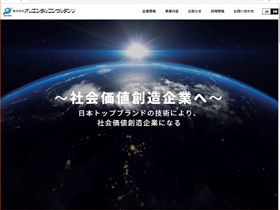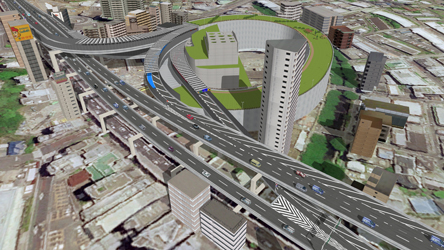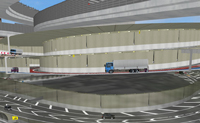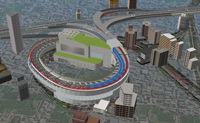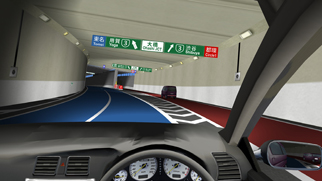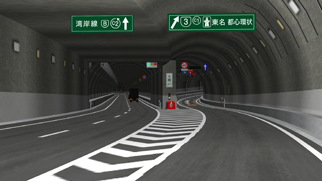|
In the meantime, based on its group companies that had been formed, ACKG Ltd. was established in 2006. In 2018, it was renamed "Oriental Consultants Holdings Co., Ltd." The Company is currently composed of 6 companies including Oriental Consultants Co., LTD.
Its core company, Oriental Consultants currently establishes its head office (Tokyo), 10 branches (Hokkaido, Tohoku, Kantou, Hokuriku, Chubu, Kansai, Chugoku, Shikoku, Kyushu, and Okinawa), 45 offices and 1 environmental analysis center under them. About 1,160 employees are working in the above sites (as of July 2019). Oriental Consultants also declared to become a "Social value creator" at the time of 60th anniversary. To realize this, the Company is promoting prioritized projects classified into 6 categories as follows: 1) road improvement and maintenance, 2) watershed management and maintenance, 3) disaster prevention, 4) transportation, 5) regional revitalization and 6) overseas projects.
Position of Transportation Policy Department, Its Original Approach
One of the prioritized projects, transportation business promotes realization of safe, smooth and comfortable road traffic utilizing advanced technologies and road spaces as well as town planning based on regional characteristics, with transport technologies and policies as their backbone. Among them, Transportation Policy business deals with various social experiments and securing mobility in regional transportation based on Japanese transportation policies, building up safe and comfortable road spaces, and town planning.
Transportation Policy Department presented here is managed under Kantou Branch. About 80% of its business accounts for services for customers within the business area of the Branch (according to Mr. Goto), while they also support nationwide study based on the direction decided by Transportation Division of the head office. Nearly 40 employees work on studying into ITS (Intelligent Transport Systems), automated driving, transportation planning, problems of roads after starting operation etc.
Mr. Goto mentions an approach to preparing strategic manuals as a challenge
for the Department to attach weight to in recent years. For example, in
a case of introducing the road facility that has been successful overseas
such as the roundabout, they rather "get involved from the point of
preparing the manual" than "use the <existing manual> after
it's completed".
In other words, when designing such kind of facility, they would like to examine it not from the viewpoint of a mere user of the manual, but from the viewpoint of a creator of the manual while reflecting the original Japanese data. This way of thinking has been taking root.
In addition, in treating traffic infrastructure, basic information about traffic volume and speed, traveling situations of individual vehicle is very important. From such awareness, they consistently commit themselves to in-house development of sensors and equipment to obtain these kinds of information.
UC-win/Road DS to Utilize in Examining Diverse Measures such as Guidance and Road Information Board
Mr. Goto's main job is making study and proposals about the fields related to smooth traffic and traffic safety such as measures to mitigate traffic congestion in the Department. He has been utilizing UC-win/Road DS through not only his own work but also diverse projects in the Department.
The first opportunity when he was involved with the task to apply UC-win/Road DS was the project of Ohashi Junction of the Metropolitan expressway (Shutoko) mentioned at the opening. This project was planned to connect the underground tunnel of Central Circular Route (Yamate Tunnel) with Route 3 (Shibuya Line) within the limited site conditions in the metropolitan area. To solve various challenges, it was planned as a 4-layer double-looping structure that stretches 70m high, covered with a rooftop. The circumference of the loop is about 400m. Since this is an unprecedented special structure, it was feared that drivers' spatial recognition ability would decrease or their stress would increase. Consequently, the Company proposed a guiding measure using color as its solution (2008).
"We had known that guidance using color would be effective." Several years before, Mr. Goto was in charge of examining the guidance system at Terminals 1 and 2 of Haneda Airport. At that time, they proposed a measure to guide airport users to the destination using color. Then they performed an experiment of having users to watch videos created with CG (computer graphics) to demonstrate its effectiveness. This led to adoption of the measure.
Backed by this experience, the Ohashi Junction Project was so designed as to guide drivers to the direction of destination at the junction of Route 3 (Shibuya Line) without fail by indicating the direction by color of the road surface: "blue" for Tomei in the suburb, and "red" for metropolitan area. At the same time, they also proposed to unify the color design of rubber poles to prevent accidents and zebra boards to warn curve within the whole road space. To verify the effectiveness of the measure, UC-win/Road DS was introduced. However, as there were restrictions on representation of colors of how the measure would appear (in color), they conducted experiments at some place of a construction site, by using actual materials for example, to decide what color to adopt and verify the appearance of the measure.
Through the project, they recognized advantages of UC-win/Road DS that allows prior representation of the environment to be realized after completion of the project, and attempting various patterns with ease. Since then, the DS has been used for several projects. In recent years, for example, it has been utilized in developing DS for experiencing evacuation in tunnel fire using the head mounted display (HMD), and studying the amount of information readable by drivers on traveling from the information board on the expressway.
Possibility of Utilizing UC-win/Road DS to Expand
"(VR) DS is a very effective multi-purpose tool in the sense that it allows users to have experience".
For example, once a certain section of road is created with VR, it can be used not only for examining consultation, but also for showing representation of the environment to be realized after completion in the later stage of discussion to build consensus more easily. If it is used for public relations activity like some events, it can also be utilized for educational purpose while adding an element of entertainment to it. Mr. Goto mentions a wide variety of its uses.
That is to say, in his vision, the objects of its application include not only a case to create what has not been realized yet in the world, but also a case that needs examination about examples with variations such as preparation of standards, or a case to examine with different traffic modes switched.
Further, he mentioned that creating a whole town with VR can make it possible to develop into a variety of activities while performing communication in VR environment. Higher the accuracy becomes, wider the possibility of utilization should become, as he considers.
Stance of User Side and Development of VR technology
As long as VR environment is not real, maybe "there is no perfect score of one hundred", says Mr. Goto. Thus, they do their best more in how to use it. At the same time, they try to clearly tell FORUM8 what is lacking in the existing DS as their needs for example, to get closer to the full score as much as possible in the future. This is what he talks about their stance. They are proud that by reflecting such approach, reality of images has been steadily improved so far, and that improvement in the number and positions of monitors has enabled representation that is closer to the actual driving environment.
That is, not giving up because "it's impossible" with existing DS, but rather accumulating needs of "what kind of things to expect DS to do" makes it possible for VR technology and DS itself evolve more and more, and the reproducibility brought about by them also get closer to the reality. Accumulation of such technologies will probably allow realization of something like "virtual town" mentioned above.
"(The world in which advancement of VR and AI play a key role is) a field which can progress on and on in a technological point of view. (In that sense, the users' side) should keep on making requests."
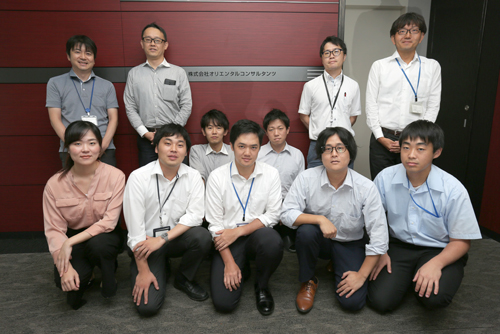 |
| Members of Safety and Smooth Team, Transportation Policy Department, Kantou Branch |
|
